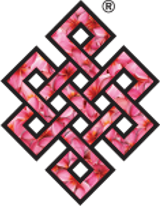Narcissus (Reconstitution)
Description
Narcissus is a botanical name for the sort of springtime bulbous plant of amaryllis family, Amaryllidaceae. There are around 26 of wild and several hundreds of cultivated variances, and although it is mainly considered to be a spring-time flower, some sorts bloom in autumn. Sorts are different by color, shape and size. The flower can be yellow or white, but also combined white and yellow, orange, red, and pink. The flowers, growing on a strong stalk, can be star-shaped or trumpet shaped, simple or multi-flowered. The leaves are long and light-green.
Narcissus is a genus of mainly hardy, mostly spring-flowering, bulbous perennials in the Amaryllis family, subfamily Amaryllidoideae. Various common names including daffodil, narcissus, and jonquil are used to describe all or some of the genus.Various common names including daffodil, narcissus, and jonquil are used to describe all or some of the genus. They are native to meadows and woods in Europe, North Africa and West Asia, with a center of distribution in the Western Mediterranean. The number of distinct species varies widely depending on how they are classified, with the disparity due to similarity between species and hybridization between species.
The number of defined species ranges from 26 to more than 60, depending on the authority. Species and hybrids are widely used in gardens and landscapes.The derivation of the Latin narcissus (from the ancient Greek ?????ss??) is unknown. It may be a loanword from another language. It is frequently linked to the Greek myth of Narcissus, who became so obsessed with his own reflection that as he knelt and gazed into a pool of water, he fell into the water and drowned.In some variations, he died of starvation and thirst. In both versions, the narcissus plant sprang from where he died. However, there is no evidence for this popular derivation, and the person's name may have come from the flower's name. Pliny wrote that the plant was named for its narcotic properties (?a???? narkao, "I grow numb" in Greek).
Again, this explanation lacks any real proof and is largely discredited."Narcissus" is the most commonly used plural, but "narcissi" and "narcissuses" are also acceptable plurals in both British and American English usage. Narcissus grow from pale brown-skinned spherical bulbs with pronounced necks. The leafless stems, appearing from early to late spring depending on the species, bear from 1 to 20 blooms. Each flower has a central bell-, bowl-, or disc-shaped corona surrounded by a ring of six floral leaves called the perianth which is united into a tube at the forward edge of the 3-locular ovary. The three outer segments are sepals, and the three inner segments are petals.
Flower colour varies from white through yellow to deep orange. Breeders have developed some daffodils with double, triple, or ambiguously multiple rows and layers of segments, and several wild species also have known double variants.The seeds are black, round and swollen with a hard coat.One of the most common dermatitis problems for florists, "daffodil itch" involves dryness, fissures, scaling, and erythema in the hands, often accompanied by subungual hyperkeratosis (thickening of the skin beneath the nails). It is blamed on exposure to calcium oxalate in the sap.One of the most expensive absolutes in the lab , but mere traces in a blend can do wonders. Traces in Musks especially White Musks for Fragrances will smell delightful with traces of this material. Jasmine accords will be boosted tremendously by this wonderful material.

